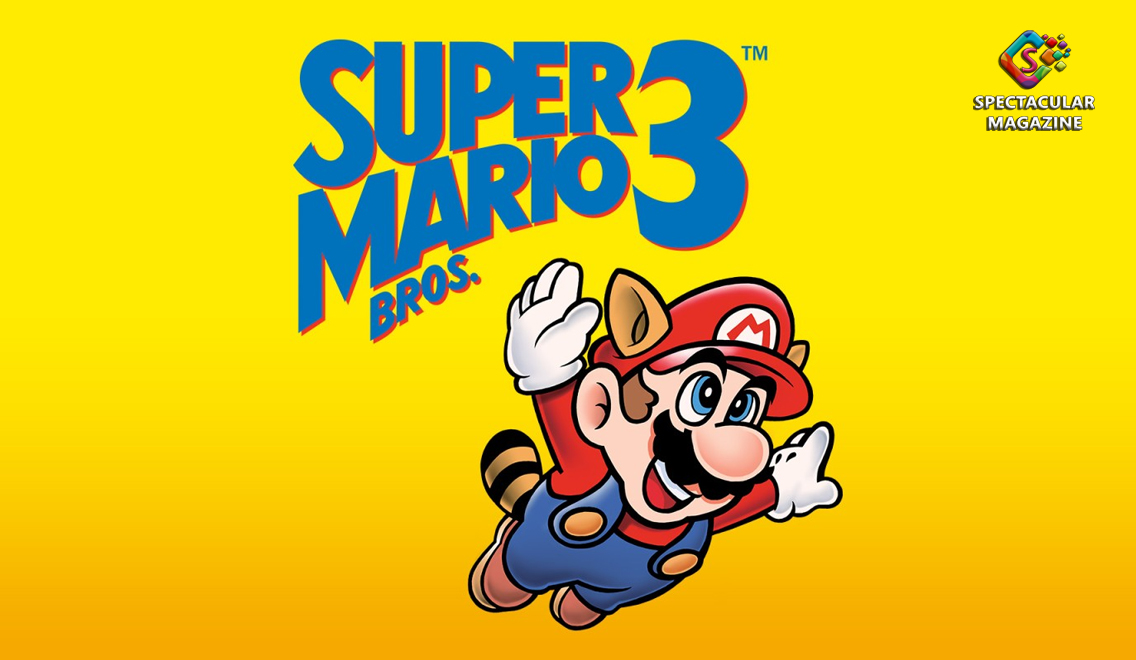Super Mario Bros. 3 – 30th Anniversary Perspective
February 1990. Mike Tyson earned his first loss against James “Buster” Douglas in Tokyo, Japan, and Magic Johnson earns MVP despite the West losing to the East in the NBA All-Star Game in Miami, Florida.
Not so fast…Nintendo is about to release something that will take the videogame industry by storm!
On Monday, February 12, 1990, Nintendo released Super Mario Bros. 3 for the Nintendo Entertainment System. The game featured a price of $49.99, selling out within days of release.
Super Mario Bros. 3 is a two-player alternating. When another player dies, the second player takes its place.
It took two years and an $800,000 budget to complete. Director Shigeru Miyamoto worked closely with the designers and programmers.
Mario 3 leans towards various skilled players. There are copious amounts of bonus coins and 1-ups in earlier worlds, while the latter worlds contain an influx of arduous challenges for experienced players.
The development team was exceptional in adding various power-ups and concepts such as being a raccoon, frog and a hammer guy. Plus, they included various enemies such as the Koopa Kids who are named after famous musicians. Prime examples were “Ludwig von Koopa” named after Ludwig von Beethoven and “Roy Koopa” named after Roy Orbison.
Super Mario Bros. 3 introduced eight new worlds, with various themes and adding twists to hundreds of levels. Its level design was wonderfully made with backgrounds of leveling platforms, air, land, and sea.
The airship theme, which is my favorite in the game.
Also, the game adds to its flair by introducing “warp” whistles to ease the journey through worlds in the sky, ice, water, and lava. The game even has a “Giant” world.
SMB3 has outstanding music, composed by the great Koji Kondo. He composed music for the original Super Mario Bros., Ice Hockey and the Legend of Zelda.
Before its release, it received a heavy promotion from the 1989 film – “The Wizard,” which featured Fred Savage, who played as Kevin Arnold on the 1988-93 ABC sitcom, “The Wonder Years.” Super Mario Bros. 3 was used in the final scene during a video game competition.
Despite “The Wizard” claiming to be the first public showing of the game, many publications such as Electronic Gaming Monthly and GamePro covered the year-old Japanese version prior to release. Plus, it hit #20 on the Nintendo Power Charts of the September/October 1989 issue of Nintendo Power.
Nintendo unleashed its $25 million advertisement campaign.
As many as 250,000 units were sold out in two days. 700,000 copies were sold in March 1990, in only its second month of existence.
Thanks to its high demand, it was arduous to obtain a copy.
Mario 3 was so anticipated, that kids would ask for the game on their Christmas lists before the game was even released.
On the “Lifestyles” section of “The Courier Newspaper” on March 28, 1990, Paul Franklin explained, “If Super Mario Bros. 3 was a movie instead of a computer game, it would be an Oscar.” Yes, it was (and still is) that good!
Due to the success of the game, McDonald’s released Happy Meal toys and NBC aired a Saturday Morning cartoon in promotion of the game. Additionally, cross-promotions with Nabisco helped add to the hype.
Even as Sega’s new Genesis and NEC’s TurboGraphix-16 were the new kids on the block, it still didn’t hold a candle of the “awesomeness” of Super Mario Bros. 3.
By the summer of 1990, Nintendo released its first full-fledged strategy guide featuring the game. It contained maps of every level, secret and details of characters and enemies.
It was a feature on Nintendo Power’s Power Charts and a popular title for the NES, until its 1995 demise. I believe it helped the NES remain popular as Nintendo put more focus on the Super Nintendo.
Thanks to the success of Super Mario Bros. 3, Nintendo controlled 88% of the gaming market in 1990, with a $3.4 billion market share. It sold eight million copies of the game in 1991, grossing $4 million. It was the best-selling standalone video game ever.
In 1992, it was packaged with the Nintendo Entertainment System for $99 as the “Challenge Set.”
Around 1994-95, Wal-Mart packaged the game with Dr. Mario and the SMB3 Strategy Guide.
August 1993 featured the game on Nintendo’s own Super Nintendo as “Super Mario All-Stars,” which was with three other Super Mario Bros. games — Super Mario Bros., Super Mario Bros. 2 and Super Mario Bros. — The Lost Levels, which was only in Japan. This version presented enhanced graphics in 16-bit form and with save states, which weren’t in the original games.
Thirteen years later, it was re-released on the Game Boy Advance as Super Mario Advance 4. It uses the truncated version of Super Mario All-Stars version of Super Mario Bros. 3.
Since then, it has been re-released on various different forms, such as Nintendo’s Virtual Console service for the Wii, Wii U, and DS. In addition to this, Nintendo released it on the NES Classic Mini in November 2016.
Go ahead and dust off that old-school NES or introduce the young kids to the NES Mini and play some Super Mario Bros. 3!!! You will not be disappointed.
No wonder why the legacy of Super Mario Bros. 3 lives on! It has been on many greatest video games of all-time lists, thanks to its high replay value.


